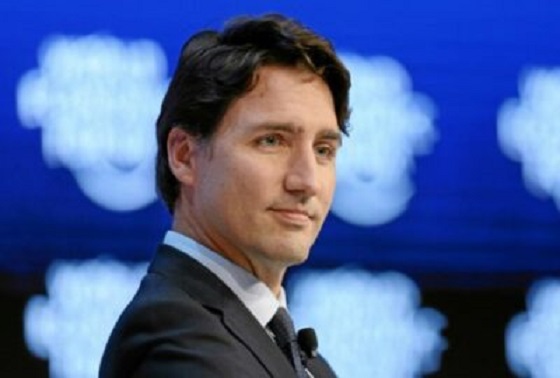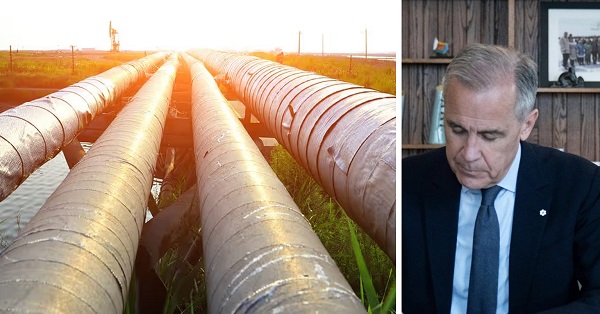Automotive
Ottawa’s tariffs undercut Ottawa’s EV mandate

From the Fraser Institute
Asian countries such as China and Japan were not particular threats to prior automotive markets because North America’s massive and diverse internal combustion vehicle markets were capable of relatively lower-cost production of superior quality vehicles. That’s not shaping up to be the case for EVs, which are vastly more expensive coming off North American assembly lines than in China and other Asian countries.
Seemingly every week, Canada’s electric vehicle (EV) transition policy framework grows more incoherent. The goal of Canada’s EV policy is to ensure all new light-duty vehicle sales in Canada are zero-emission vehicles (ZEVs), with a strong emphasis on battery-electric vehicles, by 2035.
The latest incoherence is Prime Minister Trudeau’s announcement of 100 per cent tariffs on Chinese EV imports and 25 per cent tariffs on Chinese steel and aluminum imports (the Canada needs to build EVs). This will directly undercut the government’s EV transition targets by denying Canadians access to affordable electric cars.
The stated rationale for the tariffs is, according to Finance Minister Chrystia Freeland, that the “Chinese are trying to corner the North American EV market by dumping subsidized vehicles into it” and that “China has an intentional, state-directed policy of overcapacity and oversupply designed to cripple our own industry” so “we simply will not allow that to happen to our EV sector.” And arguably, some of that is probably reasonable.
Tariffs are generally understood as protectionist mechanisms, designed to shield domestic industries from lower-cost foreign competition by making imported goods more expensive. Additionally, they can serve as punitive measures to penalize countries for hostile economic or political actions. By limiting access to one’s markets, tariffs can reduce the profits of the targeted country, thereby pressuring it to alter behaviours or policies. When imposed against countries intentionally sabotaging markets, tariffs may be considered a legitimate response.
But tariffs on China will also hurt Canadians by keeping lower-cost goods out of our market, leaving them with only higher-priced goods and services provided by protected domestic industries that need not fear price competition and thus feel little pressure to lower the prices for their goods and services.
And this is part of the incoherence of the new Trudeau tariff policy. The Trudeau EV mandates are set to create, in essence, a monopoly on the types of automotive technologies (again, EVs) allowed to be used in Canada, which other countries can manufacture more cheaply than domestic manufacturers. Asian countries such as China and Japan were not particular threats to prior automotive markets because North America’s massive and diverse internal combustion vehicle markets were capable of relatively lower-cost production of superior quality vehicles. That’s not shaping up to be the case for EVs, which are vastly more expensive coming off North American assembly lines than in China and other Asian countries.
By driving up the costs of buying EVs in Canada, the Trudeau government will directly undercut its EVs-by-2035 mandate. If people can’t afford EVs, as most currently cannot, the EV mandate targets are doomed. People will simply hold their old internal-combustion vehicles for longer. This trend is already observable in the United States where new vehicles have become more expensive. Americans are holding on to their vehicles longer than ever, with the average vehicle age reaching 13.6 years.
The Trudeau government’s highest priority has been the war on climate change, which various government leaders in Canada and around the world have proclaimed the greatest threat to people and the planet in human history. But if the government is sincere about this, then the priority should be to maximize Canadians’ access to cheaper EVs, and the prime minister should be largely indifferent to where Canadians choose to source those EVs. Indeed, he should urgently want low-cost EVs available to Canadians for there to be any hope of achieving his all-EV by 2035 goal.
Author:
Automotive
The high price of green virtue

By Jerome Gessaroli for Inside Policy
Reducing transportation emissions is a worthy goal, but policy must be guided by evidence, not ideology.
In the next few years, the average new vehicle in British Columbia could reach $80,000, not because of inflation, but largely because of provincial and federal climate policy. By forcing zero-emission-vehicle (ZEV) targets faster than the market can afford, both governments risk turning climate ambition into an affordability crisis.
EVs are part of the solution, but mandates that outpace market acceptance risk creating real-world challenges, ranging from cold-weather travel to sparse rural charging to the cost and inconvenience for drivers without home charging. As Victoria and Ottawa review their ZEV policies, the goal is to match ambition with evidence.
Introduced in 2019, BC’s mandate was meant to accelerate electrification and cut emissions from light-duty vehicles. In 2023, however, it became far more stringent, setting the most aggressive ZEV targets in North America. What began as a plan to boost ZEV adoption has now become policy orthodoxy. By 2030, automakers must ensure that 90 per cent of new light-duty vehicles sold in BC are zero-emission, regardless of what consumers want or can afford. The evidence suggests this approach is out of step with market realities.
The province isn’t alone in pursuing EV mandates, but its pace is unmatched. British Columbia, Quebec, and the federal government are the only ones in Canada with such rules. BC’s targets rise much faster than California’s, the jurisdiction that usually sets the bar on green-vehicle policy, though all have the same goal of making every new vehicle zero-emission by 2035.
According to Canadian Black Book, 2025 model EVs are about $17,800 more expensive than gas-powered vehicles. However, ever since Ottawa and BC removed EV purchase incentives, sales have fallen and have not yet recovered. Actual demand in BC sits near 16 per cent of new vehicle sales, well below the 26 per cent mandate for 2026. To close that gap, automakers may have to pay steep penalties or cut back on gas-vehicle sales to meet government goals.
The mandate also allows domestic automakers to meet their targets by purchasing credits from companies, such as Tesla, which hold surplus credits, transferring millions of dollars out of the country simply to comply with provincial rules. But even that workaround is not sustainable. As both federal and provincial mandates tighten, credit supplies will shrink and costs will rise, leaving automakers more likely to limit gas-vehicle sales.
It may be climate policy in intent, but in reality, it acts like a luxury tax on mobility. Higher new-vehicle prices are pushing consumers toward used cars, inflating second-hand prices, and keeping older, higher-emitting vehicles on the road longer. Lower-income and rural households are hit hardest, a perverse outcome for a policy meant to reduce emissions.
Infrastructure is another obstacle. Charging-station expansion and grid upgrades remain far behind what is needed to support mass electrification. Estimates suggest powering BC’s future EV fleet alone could require the electricity output of almost two additional Site C dams by 2040. In rural and northern regions, where distances are long and winters are harsh, drivers are understandably reluctant to switch. Beyond infrastructure, changing market and policy conditions now pose additional risks to Canada’s EV goals.
Major automakers have delayed or cancelled new EV models and battery-plant investments. The United States has scaled back or reversed federal and state EV targets and reoriented subsidies toward domestic manufacturing. These shifts are likely to slow EV model availability and investment across North America, pushing both British Columbia and Ottawa to reconsider how realistic their own targets are in more challenging market conditions.
Meanwhile, many Canadians are feeling the strain of record living costs. Recent polling by Abacus Data and Ipsos shows that most Canadians view rising living costs as the country’s most pressing challenge, with many saying the situation is worsening. In that climate, pressing ahead with aggressive mandates despite affordability concerns appears driven more by green ideology than by evidence. Consumers are not rejecting EVs. They are rejecting unrealistic timelines and unaffordable expectations.
Reducing transportation emissions is a worthy goal, but policy must be guided by evidence, not ideology. When targets become detached from real-world conditions, ideology replaces judgment. Pushing too hard risks backlash that can undo the very progress we are trying to achieve.
Neither British Columbia nor the federal government needs to abandon its clean-transportation objectives, but both need to adjust them. That means setting targets that match realistic adoption rates, as EVs become more affordable and capable, and allowing more flexible compliance based on emissions reductions rather than vehicle type. In simple terms, the goal should be cutting emissions, not forcing people to buy a specific type of car. These steps would align ambition with reality and ensure that environmental progress strengthens, rather than undermines, public trust.
With both Ottawa and Victoria reviewing their EV mandates, their next moves will show whether Canadian climate policy is driven by evidence or by ideology. Adjusting targets to reflect real-world affordability and adoption rates would signal pragmatism and strengthen public trust in the country’s clean-energy transition.
Jerome Gessaroli is a senior fellow at the Macdonald-Laurier Institute and leads the Sound Economic Policy Project at the BC Institute of British Columbia
Automotive
Elon Musk Poised To Become World’s First Trillionaire After Shareholder Vote


From the Daily Caller News Foundation
At Tesla’s Austin headquarters, investors backed Musk’s 12-step plan that ties his potential trillion-dollar payout to a series of aggressive financial and operational milestones, including raising the company’s valuation from roughly $1.4 trillion to $8.5 trillion and selling one million humanoid robots within a decade. Musk hailed the outcome as a turning point for Tesla’s future.
“What we’re about to embark upon is not merely a new chapter of the future of Tesla but a whole new book,” Musk said, as The New York Times reported.
Dear Readers:
As a nonprofit, we are dependent on the generosity of our readers.
Please consider making a small donation of any amount here.
Thank you!
The decision cements investor confidence in Musk’s “moonshot” management style and reinforces the belief that Tesla’s success depends heavily on its founder and his leadership.
Tesla Annual meeting starting now
https://t.co/j1KHf3k6ch— Elon Musk (@elonmusk) November 6, 2025
“Those who claim the plan is ‘too large’ ignore the scale of ambition that has historically defined Tesla’s trajectory,” the Florida State Board of Administration said in a securities filing describing why it voted for Mr. Musk’s pay plan. “A company that went from near bankruptcy to global leadership in E.V.s and clean energy under similar frameworks has earned the right to use incentive models that reward moonshot performance.”
Investors like Ark Invest CEO Cathie Wood defended Tesla’s decision, saying the plan aligns shareholder rewards with company performance.
“I do not understand why investors are voting against Elon’s pay package when they and their clients would benefit enormously if he and his incredible team meet such high goals,” Wood wrote on X.
Norway’s sovereign wealth fund, Norges Bank Investment Management — one of Tesla’s largest shareholders — broke ranks, however, and voted against the pay plan, saying that the package was excessive.
“While we appreciate the significant value created under Mr. Musk’s visionary role, we are concerned about the total size of the award, dilution, and lack of mitigation of key person risk,” the firm said.
The vote comes months after Musk wrapped up his short-lived government role under President Donald Trump. In February, Musk and his Department of Government Efficiency (DOGE) team sparked a firestorm when they announced plans to eliminate the U.S. Agency for International Development, drawing backlash from Democrats and prompting protests targeting Musk and his companies, including Tesla.
Back in May, Musk announced that his “scheduled time” leading DOGE had ended.
-

 Agriculture2 days ago
Agriculture2 days agoHealth Canada indefinitely pauses plan to sell unlabeled cloned meat after massive public backlash
-

 Energy15 hours ago
Energy15 hours agoPoilievre says West Coast Pipeline MOU is no guarantee
-

 Carbon Tax19 hours ago
Carbon Tax19 hours agoCanadian energy policies undermine a century of North American integration
-

 Alberta16 hours ago
Alberta16 hours agoWest Coast Pipeline MOU: A good first step, but project dead on arrival without Eby’s assent
-

 Energy14 hours ago
Energy14 hours agoWill the New West Coast Pipeline MoU Lead to Results? Almost Certainly Not According to AI
-

 Alberta14 hours ago
Alberta14 hours agoCarney forces Alberta to pay a steep price for the West Coast Pipeline MOU
-

 Alberta18 hours ago
Alberta18 hours agoAlberta and Ottawa ink landmark energy agreement
-

 Crime2 days ago
Crime2 days agoFBI Seizes $13-Million Mercedes Unicorn From Ryan Wedding’s Narco Network






